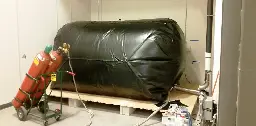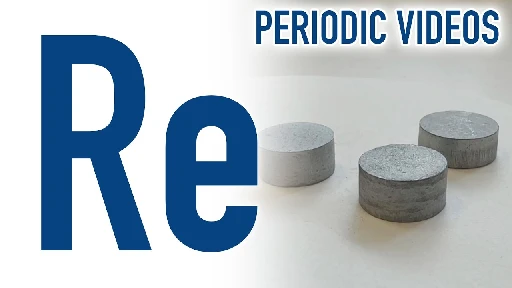Chemistry
- Making Perovskites from the Hardware Store | Extractions & Ire
YouTube Video
Click to view this content.
Consider watching this video with FreeTube, a nifty open-source program that lets you watch YouTube videos without Google spying on your viewing habits!
Combined with Libredirect, which automatically opens youtube links in Freetube, it becomes really slick and effortless to use.
- Laptop is depolymerizing -- how can I remedy this?
I acquired a ~16 year old laptop. The mat black plastic top (back of the LCD) is sticky. At first I thought the previous owner had stickers on the back that were removed. But that seems like a bad theory now. I rubbed it with a cloth and denatured alcohol and it only got slightly less sticky, but black residue came off on my hands and the cloth. This is apparently not adhesive.. it’s the plastic itself.
What’s my best move? I don’t suppose I can do anything to re-polymerize it. I don’t care about cosmetics.. I just don’t want it to be sticky and marking anything that touches it. One temptation is to put plastic film on it, like cling wrap. But that could just make a bigger mess.
- How 2 Nobel prizes were hidden from the Nazis via chemistry
In the heart of World War II, as the Nazis took control of Copenhagen, a peculiar situation took place at the Institute of Theoretical Physics, led by physicist Niels Bohr. Two Nobel laureates Max von Laue and James Franck, fearing the confiscation of their gold Nobel Prize medals by the Nazis, had sent their medals to Bohr for safekeeping.
On the day the Nazis arrived in Copenhagen, Hungarian chemist Georgy de Hevesy, who was working in Bohr's lab, devised a plan to prevent the discovery of the medals. Initially considering burying the medals, they quickly dismissed the idea, fearing the thorough searches the Nazis would conduct. Instead, de Hevesy proposed a chemical solution — literally. Utilizing a mixture known as "aqua regia" (a blend of hydrochloric and nitric acids), he set about dissolving the gold medals. This concoction is one of the few substances capable of dissolving gold, a notably unreactive element. As the Nazis marched outside, de Hevesy dissolved the precious medals, reducing them to a colorless solution that eventually turned bright orange. The liquid containing the dissolved gold was then placed on a high shelf in the laboratory, where it remained unnoticed throughout the Nazi occupation.
Post World War II, upon returning to the laboratory after V-E Day, de Hevesy found the beaker undisturbed on the shelf. The gold was recovered from the solution and returned to the Nobel Prize committee, who then reminted the medals and presented them back to Laue and Franck in a ceremony in 1952.
Source: Fermat’s Library via LinkedIn
- [Veritasium] Derek visits a thermite factory in Germany
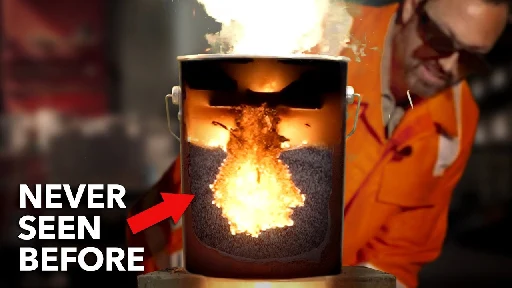
YouTube Video
Click to view this content.
- The Nobel Prize in Chemistry 2024: They cracked the code for proteins’ amazing structureswww.nobelprize.org The Nobel Prize in Chemistry 2024
The Nobel Prize in Chemistry 2024 was divided, one half awarded to David Baker "for computational protein design", the other half jointly to Demis Hassabis and John M. Jumper "for protein structure prediction"

- Scandium (new) - Periodic Table of Videos
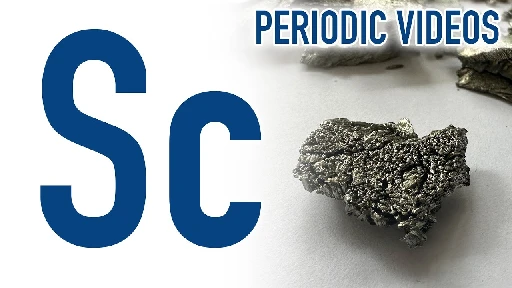
YouTube Video
Click to view this content.
Periodic Videos have updated their scandium video.
- [NurdRage] Dissolving $1000 of Platinum to Make $6000 of Chloroplatinic Acid for Professional Use
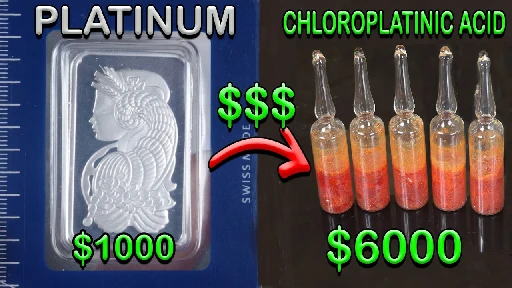
YouTube Video
Click to view this content.
Another great video from NurdRage. One of the most detailed and methodical YouTube chemists.
- Making Copper Parts from Algaecide | HyperspacePirate

YouTube Video
Click to view this content.
- [NurdRage] Extracting Thorium Dioxide from Thoriated Tungsten Rods
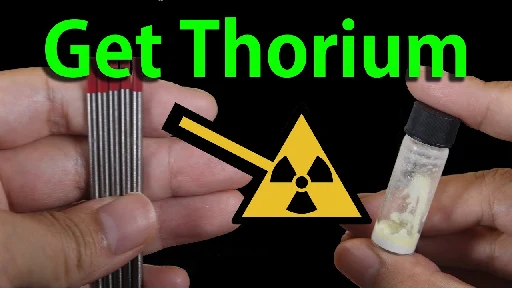
YouTube Video
Click to view this content.
New NurdRage video!
Nice to see another amateur-accessible source of thorium, since incandescent gas mantles have mostly switched to yttrium.
I wonder what the easiest way would be to reduce the thorium dioxide to thorium metal?
- [Hyperspace Pirate] Making Liquid Nitrogen with my Homemade Cryocooler
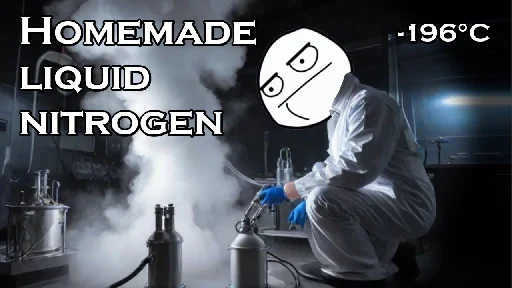
YouTube Video
Click to view this content.
Making liquid nitrogen is quite an achievement, especially using salvaged air conditioner and refrigerator parts. A nice application of the Joule-Thomson effect and countercurrent exchange too.
- [NurdRage] Make Nitric Acid without Sulfuric Acid by Oxalate Precipitation

YouTube Video
Click to view this content.
Another useful example of producing a strong acid from a weak acid by using precipitation as the driving force.
- Electrochromic windows with fast response and wide dynamic range for visible-light modulation without traditional electrodes - Nature Communicationswww.nature.com Electrochromic windows with fast response and wide dynamic range for visible-light modulation without traditional electrodes - Nature Communications
Cheng Yang and co-workers develop an “electrode-free” electrochromic window, featuring a simplified fabrication process and delivering superior optical modulation capability.
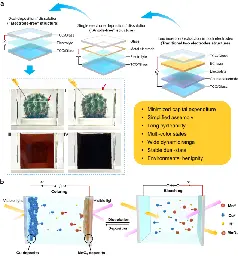
- [Cody'sLab] Can I Use Thermite to Cast an Iron Pan?

YouTube Video
Click to view this content.
Cody plays with thermite... again.
- [NurdRage] Extracting Radioactive Salt from Chornobyl Blueberries
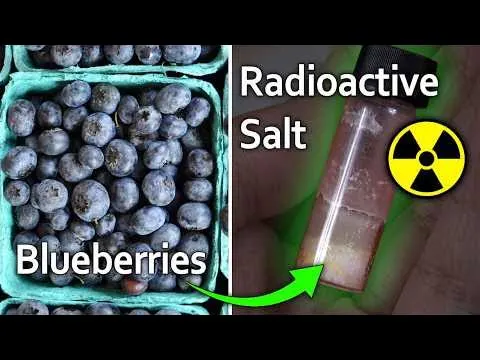
YouTube Video
Click to view this content.
cross-posted from: https://sh.itjust.works/post/21614029
> One of the OG YouTube chemists dabbles in some radiochemistry and spectroscopy.
- [NurdRage] Make sulfuric acid from oxalic acid with the sun

YouTube Video
Click to view this content.
Not very practical, but the chemistry is interesting. Producing a strong acid from a weak acid by using precipitation as the driving force is something I don't see very often.
- [NurdRage] Measuring Density with Pycnometers, Hydrometers, and Graduated Cylinders

YouTube Video
Click to view this content.
A bit of analytical chemistry for a change. I had never heard of a pycnometer!
- [NurdRage] Make Potassium Nitrate and Sodium Nitrate from Calcium Nitrate - An Alternative to Ammonium Nitrate

YouTube Video
Click to view this content.
Very useful video. Nitrate salts are a foundational feedstock in amateur (and professional) chemistry.
Edit: NurdRage reuploaded a slightly censored version: https://www.youtube.com/watch?v=RlonW4iJYrw
- NurdRage Oleum Synthesis Videos
NurdRage has published a couple videos on oleum synthesis:
- Lab Notes - Making Oleum - Successful - (April 21-2024)
- Lab notes - Making Oleum - 20% yield improvement - (May 4th - 2024)
Still optimizations to be done, but cool work so far. I love that one of the OG chemistry YouTubers is still doing interesting work.
- Thalidomide - Periodic Table of Videos
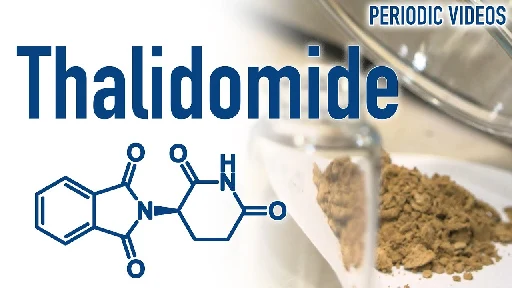
YouTube Video
Click to view this content.
A long-time viewer of Periodic Videos grew up to study chemistry, and invented a new synthetic route for thalidomide.
Also, TIL that thalidomide still has several medical uses, as long as the recipients are not pregnant.
- [Periodic Videos] Tungsten (new) - Periodic Table of Videos
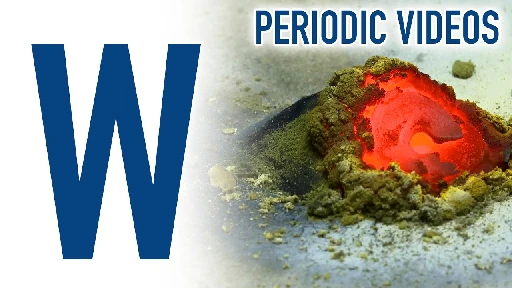
YouTube Video
Click to view this content.
- Boffins deem Google DeepMind's material discoveries rather shallowwww.theregister.com Boffins deem Google DeepMind's material discoveries shallow
Web titan rejects criticisms, insists AI-found compounds are legit
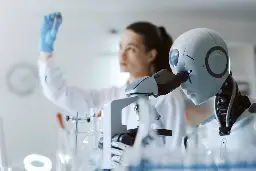
- [NurdRage] Purification of Sulfuric Acid by Distillation - Revisited

YouTube Video
Click to view this content.
- [Extractions&Ire] Making Bismuth Germanate in the microwave

YouTube Video
Click to view this content.
- Cage escape governs photoredox reaction rates and quantum yields - Nature Chemistrywww.nature.com Cage escape governs photoredox reaction rates and quantum yields - Nature Chemistry
The spontaneous recombination of photogenerated radicals surrounded by solvent molecules is an important energy-wasting elementary step in photoredox reactions. Now the decisive role that cage escape plays in these reactions is shown in three benchmark photocatalytic reactions, with quantitative cor...
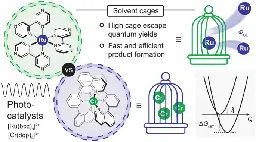
- Electric vehicle battery chemistry affects supply chain disruption vulnerabilities - Nature Communicationswww.nature.com Electric vehicle battery chemistry affects supply chain disruption vulnerabilities - Nature Communications
Electric vehicle battery supply chains are currently vulnerable to supply disruptions in China, but research shows that the cumulative effect of multiple supply chain steps creates additional vulnerabilities across multiple critical battery minerals.

- The anti-aromatic dianion and aromatic tetraanion of [18]annulene - Nature Chemistrywww.nature.com The anti-aromatic dianion and aromatic tetraanion of [18]annulene - Nature Chemistry
A previous investigation of the anti-aromatic dianion of [18]annulene concluded that it consists of a mixture of two isomers. Now it has been shown that this dianion exists as a single isomer, with a different geometry from neutral [18]annulene, and that it can be reduced further to an aromatic tetr...
![The anti-aromatic dianion and aromatic tetraanion of [18]annulene - Nature Chemistry](https://mander.xyz/pictrs/image/68408fdc-c725-49fe-889d-6d6fae0615f8.png?format=webp&thumbnail=256)
- A programmable hybrid digital chemical information processor based on the Belousov-Zhabotinsky reaction - Nature Communicationswww.nature.com A programmable hybrid digital chemical information processor based on the Belousov-Zhabotinsky reaction - Nature Communications
Computing platforms based on chemical processes can be an alternative to digital computers in some scenarios but have limited programmability. Here the authors demonstrate a hybrid computing platform combining digital electronics and an oscillatory chemical reaction and demonstrate its computational...

- [Hyperspace Pirate] Automated Ethylene Production Plant
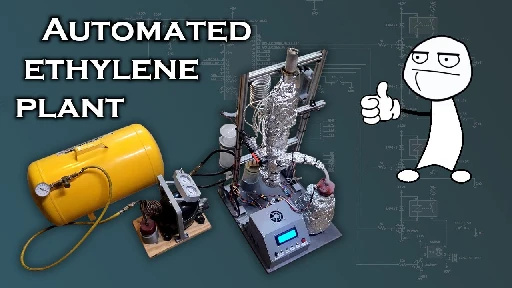
YouTube Video
Click to view this content.
- Burning 50lbs of Thermite Made From 400 Soda Cans

YouTube Video
Click to view this content.
Cody Reeder makes thermite and has a nice "campfire".
- Dishwasher guide: salt will harm the stainless steel lining. What about salt water in stainless steel pots?
The manual for my dishwasher says to refill salt just before running a wash cycle, because if any grains of salt spill onto the stainless steel interior it will corrode. If it runs right away, no issue because the salt is quickly dissolved, diluted, and flushed.
So then I realized when I cook pasta I heavily salt the water (following the advice that pasta water should taste as salty as the ocean). But what happens when I leave that highly salty brine in a pot, sometimes for a couple days to reuse it? Does that risk corroding the pots?
- Compound Interest: Women in Chemistrywww.compoundchem.com Compound Interest: Women in Chemistry
Explorations of everyday chemical compounds

- Bistability between π-diradical open-shell and closed-shell states in indeno[1,2-a]fluorene - Nature Chemistrywww.nature.com Bistability between π-diradical open-shell and closed-shell states in indeno[1,2-a]fluorene - Nature Chemistry
Switching the magnetic state of a polycyclic conjugated hydrocarbon in a reversible and controlled manner is challenging. Now, by means of single-molecule scanning probe microscopy, an indenofluorene isomer on ultrathin NaCl films has been shown to adopt both open- and closed-shell states. Furthermo...
![Bistability between π-diradical open-shell and closed-shell states in indeno[1,2-a]fluorene - Nature Chemistry](https://mander.xyz/pictrs/image/f90717df-97dc-4673-b2aa-4d1507a0c8a4.png?format=webp&thumbnail=256)
- DeepMind's robot chef cooks up 'novel' materials with a side of controversy – Chemists dispute research claiming millions of recipes for inorganic crystalline compoundswww.theregister.com 'Novel' AI-made materials not actually new – study
Published report 'should be retracted as the main claim of discovery is wrong', UCL chemistry professor tells us

- The World’s Strongest Acid Might be Gentle Enough to Eat

YouTube Video
Click to view this content.
If you don't want to watch the entire video, it's a Carborane acid.
I'd love to see what the molecular orbitals look like. It's not every day that you see carbon forming six "bonds".
- Helium is an essential material for research and medical equipment, but it’s nonrenewable and difficult to recycletheconversation.com Helium is an essential material for research and medical equipment, but it’s nonrenewable and difficult to recycle
With the fourth significant shortage of helium in a decade continuing, companies and researchers are looking for alternative sources.
